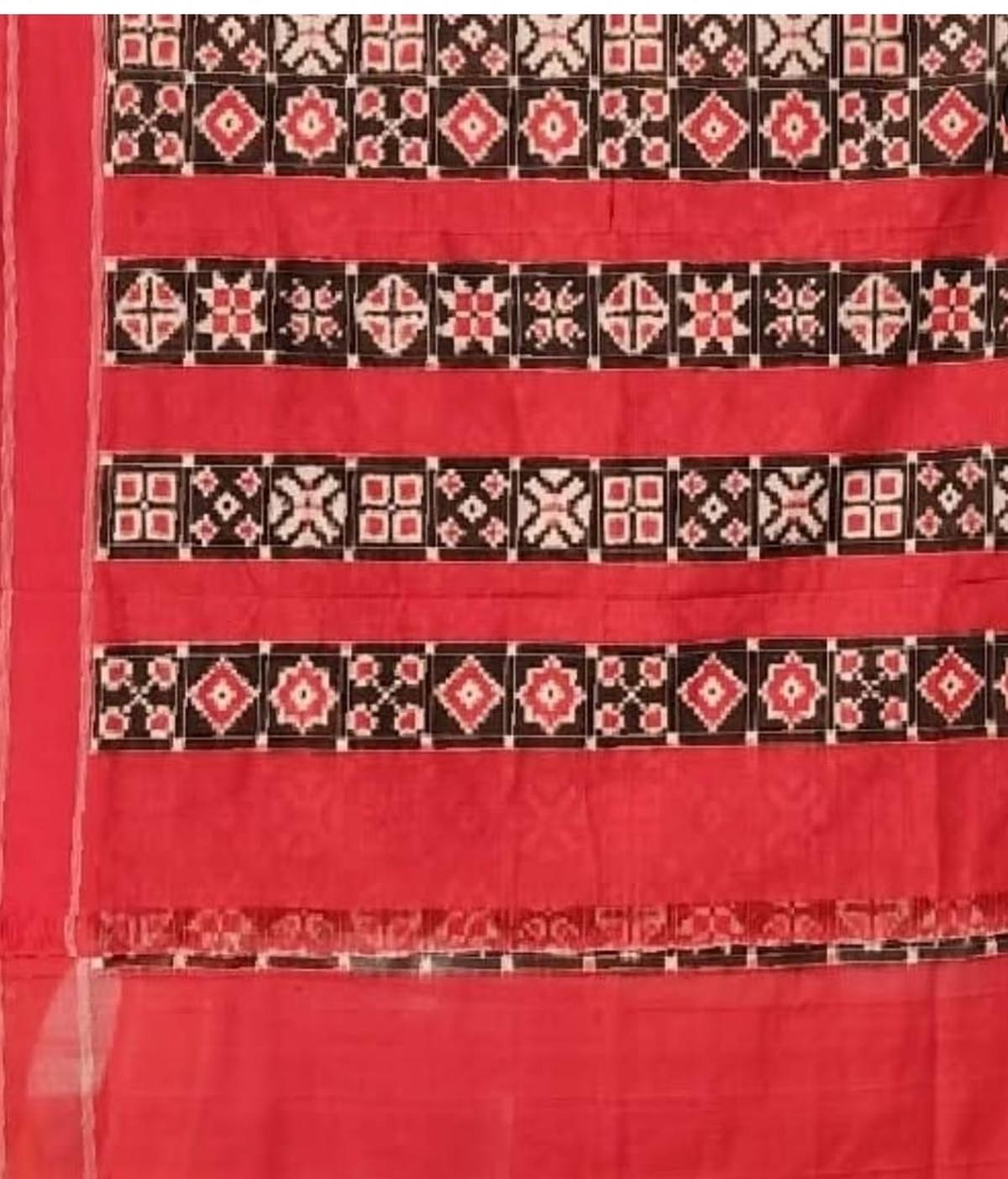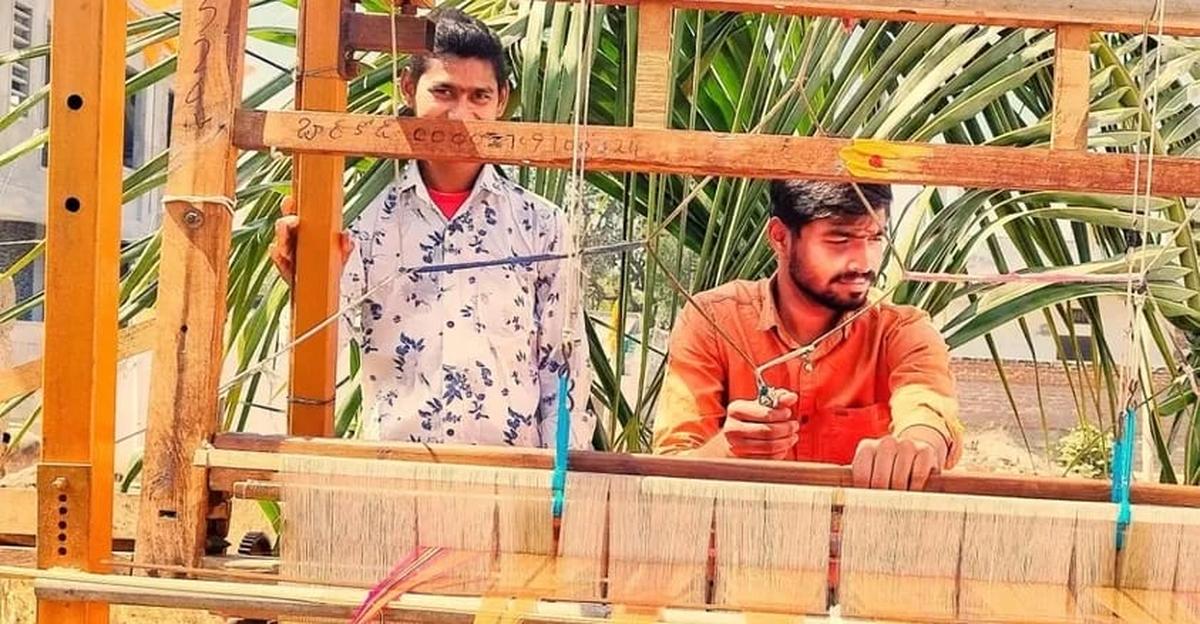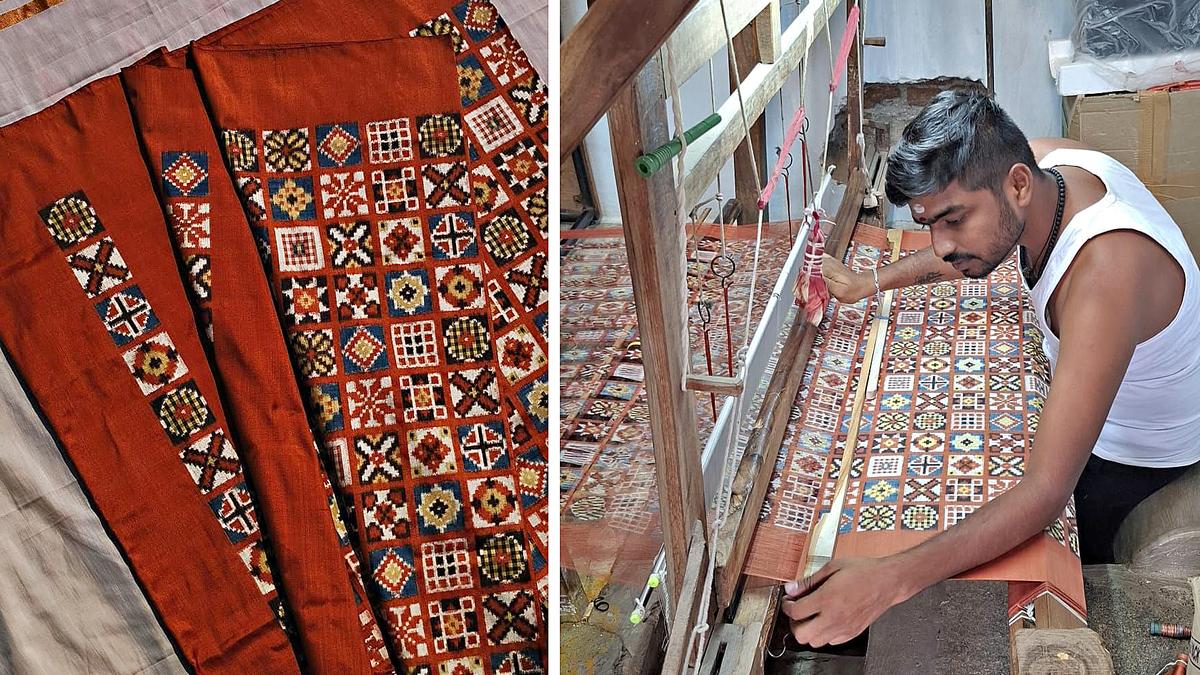
Guda Pavan; A double ikat silk sari
| Photo Credit: Special Arrangement
Guda Pavan, a young weaver from Puttapaka village, is being honoured with the Sant Kabir National Award for his naturally dyed double ikat experiment on a sari
History is quietly repeating itself in the Guda household of Puttapaka, a village in Telangana’s Nalgonda district, known for its weaving traditions.
In 2010, master weaver Guda Sreenu was awarded the prestigious National Handloom Award (by the Union Ministry of Textiles) for his craftsmanship in Teliya Rumal — a labour-intensive double ikat weave known for its geometric elegance and use of natural dyes. Now, 15 years on, it is his son Guda Pavan who is preparing to receive national recognition of his own.

Pavan has been named the recipient of the Sant Kabir National Handloom Award (Young Weaver category) — one of the highest honours in the Indian handloom sector. He will receive the award from President Droupadi Murmu for weaving a silk sari in the traditional Teliya Rumal style.
Double ikat in silk

Double ikat cotton sari
| Photo Credit:
Special arrangement
“I wanted to push the boundaries,” says Pavan, speaking just days before travelling from Puttapaka to Delhi. “Single ikat is usually done on cotton, but I decided to try double ikat in silk using only natural dyes, it’s far more complex.”
Silk, unlike cotton, does not absorb natural colours easily and tends to fade with washing. After attending a four-day workshop at Crafts Council of Telangana (CCT) Spaces in Hyderabad in 2024, Pavan began experimenting at home.
“The toughest part is maintaining consistency,” he says, referring to the precise marking-threading and tye-dye process, where warp and weft threads are dyed separately to form a perfect pattern. It took him six months to complete just four saris.
Using natural colours

Pavan (right) at his loom
| Photo Credit:
Special Arrangement
Pavan learned the eco-conscious approach by watching his father using natural dyes like marigold petals, pomegranate rind, madder roots, indigo leaves, and even jaggery fermented with iron scrap and bark extracts to create hues of yellow, red, black, and blue.
Drawing from the traditional Teliya Rumal motifs — ratham (chariot), muggu (rangoli), yagnam peeta (sacred platform), and kaya (fruit) — he tweaked the designs just enough to blend heritage with a modern aesthetic.

This is Pavan’s second trip to Delhi this year. In March, he and his father represented Telangana at Vividhita Ka Amrit Mahotsav, where they gave a live weaving demo attended by President Droupadi Murmu. Now, he’s returning with his parents and sister, Guda Shubhadayanki, for the award ceremony.
“An award brings responsibility,” he says. “With so many synthetic dyes flooding the market, it’s not easy to protect your craft’s authenticity. But when you do, the reward is worth it.”
Published – August 06, 2025 03:35 pm IST



















